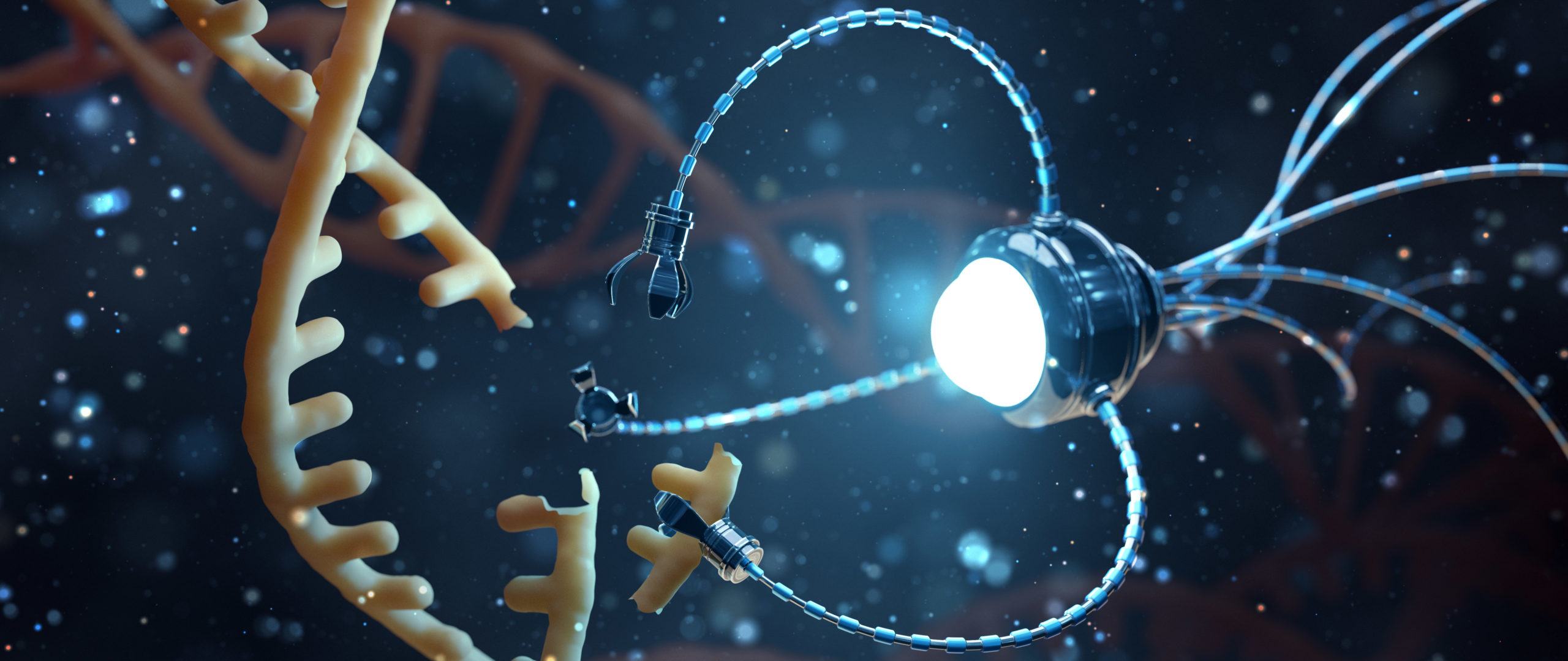Tiny Tech: The World of Nanotechnology
16th Nov 2020As the name suggests, nanotechnology is a branch of technology (as well as science and engineering) that is conducted at a nanoscale (1 to 100 nanometres). In other, more layman-friendly, words, it is the study of tiny elements which are often applied across all fields of technology and science – from biology, physics, chemistry and engineering. As a regular supplier of metrology-tested components for nanotechnological use, Knight Optical runs through some of the most novel applications within this specialised field of science and tech.
To put things into perspective and to fully understand the scale of nanotechnology, here are a few fun facts about nanometres and their comparison to units of measure that we use in everyday life:
- One nanometre equates to a billionth of a meter
- A human hair is roughly between 80,000 and 100,000 nanometres wide
- One sheet of newspaper is around 100,000 nanometres-thick.

What is nanotechnology used for?
Atoms and molecules that define the structure of the elements that surround us in everyday life (such as the clothes we buy, the food we eat and even the very bodies we are made up of) are not visible to the naked eye. Nor are they apparent through typical microscopes found within research centres, universities and other educational institutes. BBC Earth reiterates that “even the most powerful light-focusing microscopes cannot visualise single atoms1”. Here, is where nanotechnology comes in – in the form of ‘nanotools’.
What are nanotools?
Put merely; nanotools are the tools used in nanotechnology to measure nanometres. These nanotools are used for a variety of applications that require specific, ultra-precision devices that measure at the nanoscale – such as neuroscience; for example. In the 2013 study, ‘Nanotools for Neuroscience and Brain Activity Mapping (BAM)’, nanoscale analysis tools, the design of nanomaterials and how they can be used in neuroscience are investigated. The purpose of this project was to help with “the intervention and treatment of a wide variety of diseases of the brain, including depression, epilepsy, Parkinson’s and schizophrenia…2”. Approaches explored were “optical and electro-optical methods that can be used to sense neural cell activity…2”.
However, it is not only the medical sector that makes use of nanotechnological processes to measure atoms. Take the agricultural industry; for instance. A high percentage of Nitrogen – an essential nutrient within fertilisers which increases soil fertility and provides us with high-quality produce – is lost by several factors, often referred to as nitrogen use efficiency (NUE). 2010 study ‘Nanotechnology in fertilisers’ explores the use of ‘nanofertilisers’ and how they can eradicate this Nitrogen loss by encapsulating nutrients “inside nanomaterials such as nanotubes or nanoporous materials, coated with a thin protective polymer film, or delivered as particles or emulsions of nanoscale dimensions3”. It also explores how ‘on-demand’ “nanotechnology could provide devices and mechanisms to synchronise the release of nitrogen (from fertilisers) with its uptake by crops3”.
These are just two examples of nanotechnological studies. However, as a recent Forbes article highlighted, nanotechnology can commonly be found outside high-tech laboratories and are ubiquitous amongst everyday objects, including within clothing to repel liquids, by adding nanoparticles (such as zinc oxide and titanium dioxide) and even within tennis balls for a long-lasting bounce4.

What are the main types of nanotechnologies?
We have highlighted a couple of types of nanotechnologies their and applications in the studies mentioned above. As well as nanofertilisers, other nanotech includes:
- Nanocoatings: nanoscale films used to enhance the characteristics of a device. Recent studies have explored the use of nanocoatings to join the fight against the spread of COVID-19 – such as June’s study ‘Tackling COVID-19 pandemic through nanocoatings: Confront and exactitude5.’
- Nanomaterials: materials and substances that are manufactured and utilised at a nanoscale. Typical uses include within the cosmetics sector (for applications such as sunscreen – as mentioned earlier), and within the medical sector. Recent papers include using nanomaterials for ‘Cancer Theranostic Applications’, whereby the latest developments of 2D nanomaterials for cancer theranostic applications is summarised6.
- Nano-optics: also known as nano-photonics, nano-optics essentially investigates the behaviour of light on a nanoscale. They are regularly found within devices in industries such as telecommunications and computing.
Nano-Optics
Here at Knight Optical, we have been a leading supplier of optical components for many engineers, scientists and manufacturers working with the nanotechnology field. From optics for high-tech laser engraving to electron beam lithography (EBL) for the production of printed circuit boards, our optics are employed for a diverse range of applications. What is more, as well as a stock range of over 3000 optical components, we also offer custom-made optical components for those looking for project-specific optical solutions. Click here, to view our customisable options, and click here to view our vast range of stock optics.
In-demand optics from the world of nanotechnology include:

Why Choose Knight Optical?
Here at Knight Optical, we supply a range of optical components for nanotechnological applications. Discerning engineers and manufacturers rely on Knight Optical not only for the premium quality of our output and in-house state-of-the-art Metrology Laboratory and QA Department’s capabilities but also because – as well as a range of Stock Optics (available for next-day dispatch) – we also offer a range of sought-after Custom-Made Optical Components. If you are looking for premium-quality, bespoke optical components, please do not hesitate to get in touch with a member of the Technical Sales Team today.
FOOTNOTES:
1http://www.bbc.co.uk/earth/story/20151120-how-do-we-know-that-things-are-really-made-of-atoms
2ACS Nano 2013, 7, 3, 1850–1866 (https://pubs.acs.org/doi/10.1021/nn4012847)
3DeRosa, M., Monreal, C., Schnitzer, M. et al. Nanotechnology in fertilisers. Nature Nanotech 5, 91 (2010). https://doi.org/10.1038/nnano.2010.2 (https://www.nature.com/articles/nnano.2010.2#citeas)
4https://www.forbes.com/sites/bernardmarr/2020/07/03/7-amazing-everyday-examples-of-nanotechnology-in-action/?sh=d2ed3fc3e823
5Pradeep Kumar Rai, Zeba Usmani, Vijay Kumar Thakur, Vijai Kumar Gupta, Yogendra Kumar Mishra, Tackling COVID-19 pandemic through nanocoatings: Confront and exactitude, Current Research in Green and Sustainable Chemistry, Volume 3, 2020 (https://www.sciencedirect.com/science/article/pii/S266608652030014X)
6Cheng, L., Wang, X., Gong, F., Liu, T., Liu, Z., 2D Nanomaterials for Cancer Theranostic Applications. Adv. Mater. 2020, 32, 1902333. https://doi.org/10.1002/adma.201902333